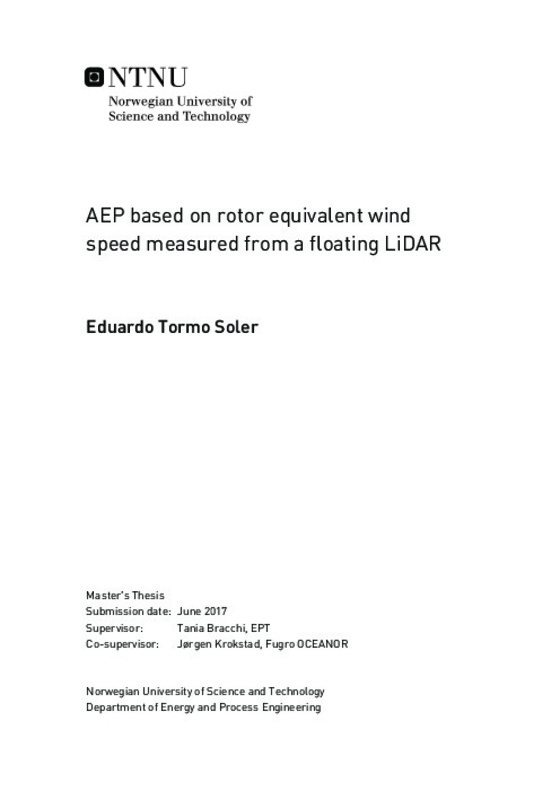JavaScript is disabled for your browser. Some features of this site may not work without it.
Buscar en RiuNet
Listar
Mi cuenta
Estadísticas
Ayuda RiuNet
Admin. UPV
PAE basada en la velocidad equivalente del rotor, mesurada mediante LIDAR flotante. Beneficios y dificultades
Mostrar el registro completo del ítem
Tormo Soler, E. (2018). PAE basada en la velocidad equivalente del rotor, mesurada mediante LIDAR flotante. Beneficios y dificultades. http://hdl.handle.net/10251/144357
Por favor, use este identificador para citar o enlazar este ítem: http://hdl.handle.net/10251/144357
Ficheros en el ítem
Metadatos del ítem
| Título: | PAE basada en la velocidad equivalente del rotor, mesurada mediante LIDAR flotante. Beneficios y dificultades | |||
| Autor: | Tormo Soler, Eduardo | |||
| Director(es): | ||||
| Entidad UPV: |
|
|||
| Fecha acto/lectura: |
|
|||
| Resumen: |
[EN] During the last years, the wind turbines rotor area and the hub height
have been increasing gradually. This has entailed new challenges for the measuring
atmospheric boundary layer techniques which must be able to ...[+]
[ES] Antecedentes
La energía eólica offshore se está volviendo muy competitiva en comparación con la onshore debido a que el uso diámetros de rotor grandes del orden de 180 metros para reducir el coste por MW. La ...[+]
|
|||
| Palabras clave: |
|
|||
| Derechos de uso: | Reserva de todos los derechos | |||
| Editorial: |
|
|||
| Titulación: |
|
|||
| Tipo: |
|
recommendations
Este ítem aparece en la(s) siguiente(s) colección(ones)
-
ETSII - Trabajos académicos [10404]
Escuela Técnica Superior de Ingenieros Industriales







